Folk: Traditional, storytelling, acoustic, cultural expression
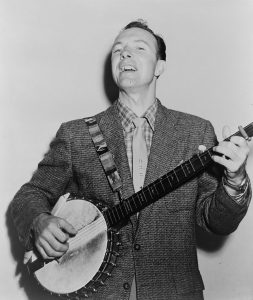
Pete Seeger
Pete Seeger, known for his folk music and activism, played an important role in influencing rock and roll, particularly in terms of its political and social themes. His songs, like “If I Had a Hammer” and “Where Have All the Flowers Gone,” helped bring a sense of purpose and collective action to music, which resonated with the rebellious spirit of rock. Seeger’s focus on simple, powerful melodies and lyrics about social justice laid the groundwork for rock musicians who wanted to use their music to challenge the status quo. His use of traditional folk instruments and rhythms also influenced rock’s incorporation of acoustic and roots elements. Artists like Bob Dylan, who bridged folk and rock, were directly influenced by Seeger’s blending of storytelling with activism. Overall, Seeger’s impact helped shape the deeper, more meaningful side of rock and roll in the 1960s and beyond.
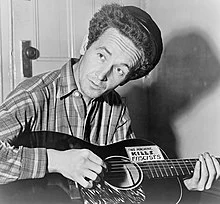
Woody Guthrie
Woody Guthrie influenced rock and roll through his powerful storytelling and socially conscious lyrics, which inspired generations of musicians to use their music as a tool for expression and activism. His folk style and emphasis on the struggles of everyday people laid the groundwork for later rock artists to write songs about real-life issues. Bob Dylan, a key figure in bridging folk and rock, was heavily influenced by Guthrie’s themes and lyrical approach. Guthrie’s simple yet compelling melodies also showed that music didn’t need to be complex to make an impact. His spirit of rebellion and advocacy for the underdog became a cornerstone of rock’s identity. As a result, rock and roll carried forward Guthrie’s legacy of using music to challenge the status quo.
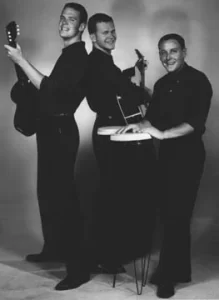
The Kingston Trio
The Kingston Trio influenced rock and roll by helping to popularize folk music in the late 1950s and early 1960s, bringing acoustic instruments and harmony-driven songs into the mainstream. Their clean-cut image and catchy storytelling made folk music more accessible to a wider audience, paving the way for more socially conscious and lyrical rock artists. Bands like The Beatles and The Byrds were inspired by the Trio’s vocal harmonies and acoustic arrangements. They also sparked a folk revival that encouraged young musicians to explore meaningful lyrics, which would become a key feature of rock music in the 1960s. The Kingston Trio’s success showed the music industry that songs with thoughtful messages could also be commercially viable. This blend of folk roots and popular appeal helped shape the direction of early rock and roll.
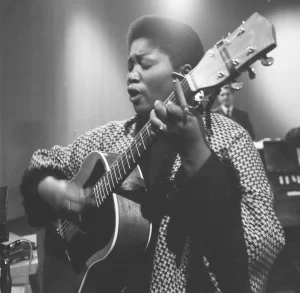
Odetta
Odetta influenced rock and roll through her powerful voice, deep connection to folk and blues traditions, and her role in the civil rights movement. Known as the “Voice of the Civil Rights Movement,” she inspired artists like Bob Dylan, Joan Baez, and Janis Joplin, who brought her spirit and style into the evolving rock scene. Her music blended folk, blues, and spirituals, showing future rock musicians how to fuse genres and deliver messages with emotional intensity. Odetta’s commitment to social justice helped set the stage for rock and roll to become a voice for change in the 1960s. Her commanding presence and storytelling through song emphasized the importance of authenticity and purpose in music. Many early rock artists carried her influence into their own work, both musically and thematically.
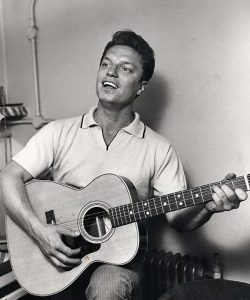
Guy Mitchell
Guy Mitchell influenced rock and roll by bridging the gap between traditional pop and the emerging rock sound of the 1950s. With upbeat, catchy hits like “Singing the Blues,” he brought a more rhythmic and energetic style to mainstream audiences, setting the stage for rock’s popularity. His clean vocal delivery and crossover appeal helped ease the transition from big band and crooner music to the bolder, youth-driven rock and roll era. Mitchell’s success showed record labels that audiences were ready for a new sound that combined pop charm with a hint of rebellion. Though not a rock artist himself, his chart-topping songs influenced early rock performers and helped shape the commercial landscape for the genre. His recordings reflected a shift in popular music that opened the door for rock and roll’s rise.
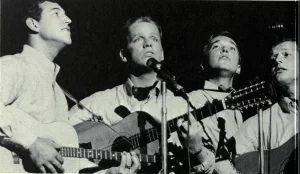
The Brothers Four
The Brothers Four influenced rock and roll by helping to popularize folk music in the early 1960s with smooth harmonies and acoustic instrumentation. Their clean, polished sound brought folk into the mainstream, creating a space where thoughtful lyrics and storytelling could thrive—elements that would later be embraced by rock artists. Groups like The Byrds and Simon & Garfunkel drew inspiration from this folk tradition, blending it with rock to create a new sound. The Brothers Four also showed that music could be both commercially successful and lyrically meaningful. Their success helped lay the groundwork for the folk-rock movement, which deeply influenced the direction of 1960s rock. By making folk music accessible to wider audiences, they indirectly shaped the sound and soul of early rock and roll.
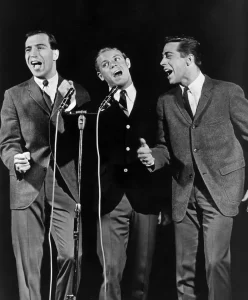
The Chad Mitchell Trio
The Chad Mitchell Trio influenced rock and roll by blending sharp political commentary with folk music, encouraging artists to use their music as a platform for social and political expression. Their witty, topical songs addressed issues like civil rights, war, and injustice—paving the way for the socially conscious lyrics that became central to 1960s rock. As part of the folk revival, they inspired future rock musicians to infuse their work with meaning and message. Their tight vocal harmonies and acoustic arrangements also influenced the sound of folk-rock bands like The Byrds and Crosby, Stills & Nash. By challenging the status quo through music, they helped shape rock and roll’s rebellious spirit. Their legacy lives on in the protest songs and reflective lyrics of many classic rock artists.